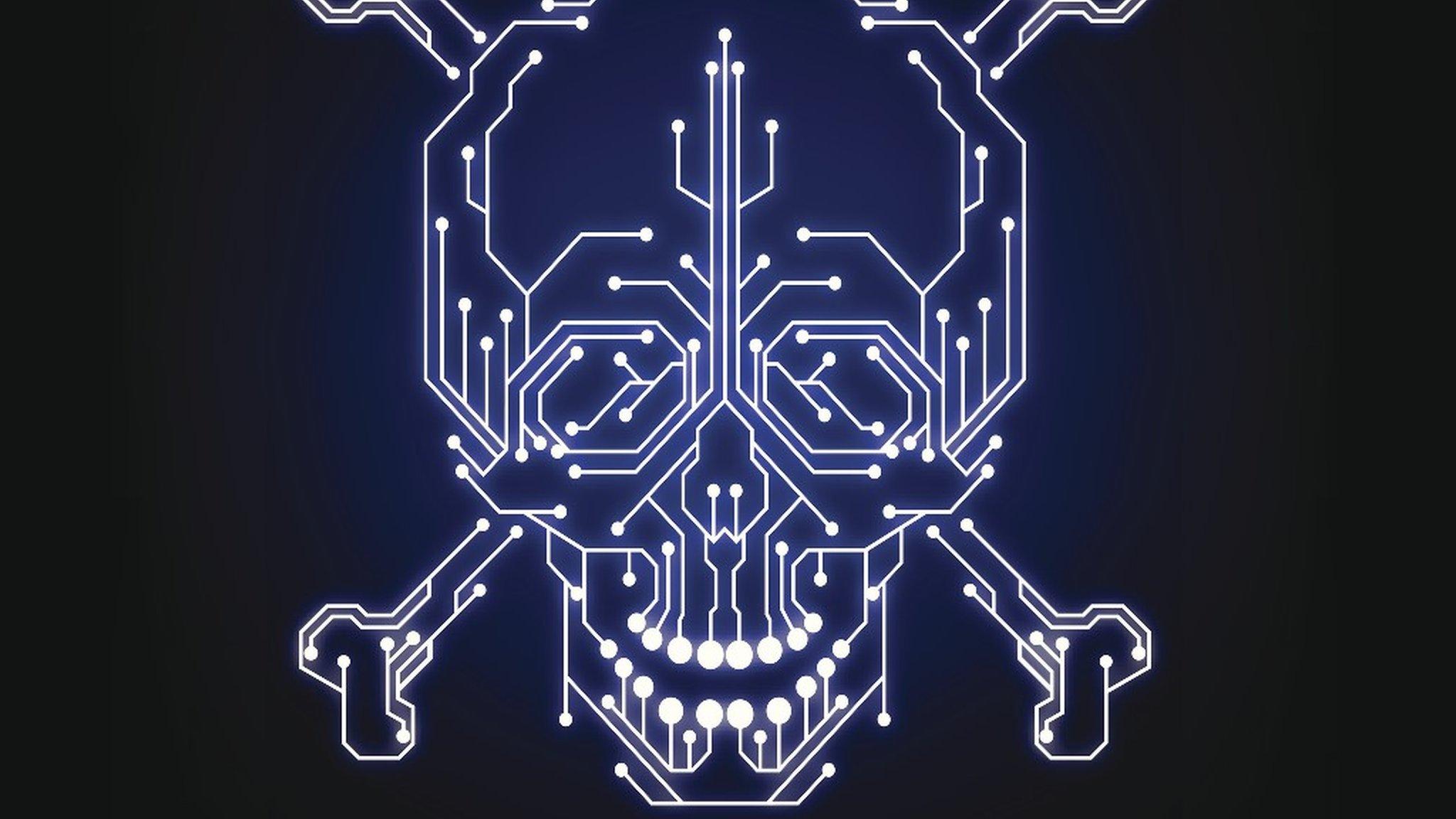Deception tech helps to thwart hackers' attacks
- Published

D-Day was aided by a massive disinformation campaign which fooled the Nazi high command
In World War II, the Allies employed all kinds of sneaky tricks to deceive their enemies into thinking they had more troops and weapons at their disposal than they actually had.
The camouflage techniques of one unit active in North Africa, which on one occasion consulted a stage magician about the way he fooled audiences, proved decisive in several key battles. And the biggest deception of all was Operation Fortitude which fooled the Nazis about where the D-Day landings would actually take place.
The same principles of deception and misdirection, albeit on a much smaller scale, are now starting to be used by some organisations to thwart malicious hackers keen to establish a bridgehead on internal networks.
"It's a classic idea of warfare to prevent the adversary from having a real understanding of your reality," said Ori Bach from deception technology firm Trapx. "It's just like the Allies in WWII. They made fake tanks, fake air bases, fake everything."
And just like those ersatz weapons of war, the fakes implanted on a network look just like the real thing.
"We create a shadow network that is mimicking the real network and is constantly changing," he said.
The use of so-called deception technology has grown out of a realisation that no organisation can mount perfect digital defences. At some point, the attackers are going to worm their way in.
Given that, said Mr Bach, it was worth preparing for their arrival by setting up targets that are simply too juicy for the malicious hackers to ignore once they land and start looking around.
"We want our shadow network to be more attractive to the hackers than the real stuff," he said.
Sweet treat
Deception technology has grown out of work on another useful cyber-thief tracking technology known as honey pots, said Joe Stewart of deception firm Cymmetria.

Seeding networks with crumbs of valuable data can frustrate attacks
A honey pot is a computer that resembles a typical corporate server to the automated tools that many hackers use to scour the net for targets. Many large security firms set up lots of individual honey pots, he said, to gather intelligence about those tools and the malware being used to subvert them.
But, said Mr Stewart, the problem with honey pots is that they are passive and only involve a few separate servers.
By contrast, deception technology is generally used on quite a grand scale so any attacker that turns up has little clue about what is real and what is fake.
Typically, said Mr Stewart, the spoofed network will be made to look more attractive to hackers by seeding the real network with "breadcrumbs" of information that lead to the fake network.
These tantalising chunks of data hint at all kinds of goodies that hackers are keen to steal, such as payment data, customer details, login credentials or intellectual property. But, instead of leading attackers to data they can sell, it leads them down a deep confusing hole that gets them no closer to that elusive, valuable data they crave.
He added that as soon as they start following the crumbs and interacting with that fake network, everything they do is recorded. That intelligence can be hugely useful, said Mr Stewart, because it involves what attackers do after their automated tools have got them a toehold on a network.
"The initial intrusion was probably done with something that was just spammed out," he said and, as such, would be spotted and logged by many different defence systems.
"What's much more interesting is the second stage persistence tools."
Organisations rarely get a look at these, he said, because once an attacker has compromised a network they usually take steps to erase any evidence of what they did, where they went and what software helped them do that.
Simple steps
Organisations do not have to commit huge amounts of resources to deception systems to slow down and thwart hacker gangs, said Kelly Shortridge from the security arm of defence firm BAE.
Instead, she said, more straightforward techniques can also help to divert attackers and waste their time.
For instance, she said, a lot of malware is now able to detect when it is being run inside a sandbox - a virtual container that helps to ensure that malicious code does not reach real world systems. Many firms use systems that quarantine suspicious files into sandboxes so if they do have malign intent they can do no harm.
Often, said Ms Shortridge, malware will not detonate if it believes it has been put into such a sandbox.
By mimicking the characteristics of sandboxes more widely it can be possible to trick malware so it never fires, she said.
Other tricks include seeding a network with the text and words that attackers look for when they are seeking a way in. Making them chase false leads can help frustrate attackers and prompt them to seek easier targets, she said.
"It's all about making reconnaissance the hardest step."
Burn rate
It is not just the gathering of information about attacks that makes deception systems so useful, said Mr Bach from Trapx.
"By engaging them and providing them with targets they are expending their most valuable resource, which is time," he said.
Instead of spending time cranking through a real network, any attacker diverted on to the shadow system is, by definition, wasting their time.

Emmanuel Macron's election campaign reportedly used fake data to foil hackers
In addition, he said, because the shadow system resembles real world desktops and servers, attackers will sometimes use their own valuable assets in a bid to worm their way deep into what they think is a corporate network.
Some of the most valuable assets that cyber-thieves possess are the never-before-seen software vulnerabilities that they have bought on dark web markets.
"If they have spent a lot of money acquiring a vulnerability and they have used it to attack a decoy then that's a huge win for the defenders," he said. This is because using it reveals information about a previously unknown vulnerability that defenders will then share with others so they can properly patch and prepare for it.
Finding and buying software vulnerabilities is a time-consuming and expensive process, said Mr Bach, and undermining it can have long-term consequences for the malicious hacker groups.
"Cyber-thieves are financial operations," he said. "They spend money on R&D and on intelligence on the dark net. If they do not get more money back as a return then that criminal enterprise will ultimately fail."

This week BBC News is taking a close look at all aspects of cyber-security. The coverage is timed to coincide with the two biggest shows in the security calendar - Black Hat and Def Con.
- Published27 July 2017

- Published26 July 2017

- Published26 July 2017

- Published26 July 2017
